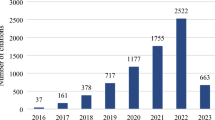Abstract
Computer experiments have become ubiquitous across the engineering, physical and chemical sciences. Computer experiments are constructed to emulate the behavior of a physical system. Assume that we perform an experiment using a two-level uniform design. If, after obtaining data, we decide additional runs of the computer simulator are needed, how to add more runs after collecting our data? How to design the experiment to efficiently extract useful information from it? In this paper, we try to answer these questions by providing a new approach for constructing efficient uniform designs by adding new runs to an existing uniform design. The optimization criteria are the uniformity criteria measured by Lee, symmetric, wrap-around, centered and mixture discrepancy and the orthogonality criteria measured by the B-criterion and the O-criterion. We investigate the relationship between orthogonality and uniformity criteria in view of analytical expressions and lower bounds.





Similar content being viewed by others
References
Durrieu, G., Briollais, L.: Sequential design for microarray experiments. J. Am. Stat. Assoc. 104, 650–660 (2009)
Dey, A., Mukerjee, R.: Fractional Factorial Plans. Wiley, NewYork (1999)
Elsawah, A.M., Qin, H.: New lower bound for centered \(L_2\)-discrepancy of four-level \(U\)-type designs. Stat. Probab. Lett. 93, 65–71 (2014)
Elsawah, A.M., Qin, H.: Lower bound of centered \(L_2\)-discrepancy for mixed two and three levels \(U\)-type designs. J. Stat. Plann. Inference 161, 1–11 (2015a)
Elsawah, A.M., Qin, H.: Mixture discrepancy on symmetric balanced designs. Stat. Probab. Lett. 104, 123–132 (2015b)
Elsawah, A.M., Qin, H.: A new strategy for optimal foldover two-level designs. Stat. Probab. Lett. 103, 116–126 (2015c)
Elsawah, A.M., Qin, H.: Lee discrepancy on symmetric three-level combined designs. Stat. Probab. Lett. 96, 273–280 (2015d)
Elsawah, A.M., Qin, H.: An efficient methodology for constructing optimal foldover designs in terms of mixture discrepancy. J. Korean Stat. Soc. 45, 77–88 (2016a)
Elsawah, A.M., Qin, H.: Asymmetric uniform designs based on mixture discrepancy. J. Appl. Stat. 43(12), 2280–2294 (2016b)
Elsawah, A.M., Qin, H.: An effective approach for the optimum addition of runs to three-level uniform designs. J. Korean Stat. Soc. 45(4), 610–622 (2016c)
Fang, K.T.: The uniform design: application of number-theoretic methods in experimental design. Acta Math. Appl. Sin. 3, 363–372 (1980)
Fang, K.T., Hickernell, F.J.: The uniform design and its applications, Bulletin of the International Statistical Institute, 50th Session, Book 1, pp. 333–349. International Statistical Institute, Beijing (1995)
Fang, K.T., Ma, C.X., Mukerjee, R.: Uniformity in fractional factorials. In: Fang, K.T., Hickernell, F.J., Niederreiter, H. (eds.) Monte Carlo and Quasi-Monte Carlo Methods in Scientific Computing. Springer, Berlin (2002)
Fang, K.T., Maringer, D., Tang, Y., Winker, P.: Lower Bounds and stochastic optimization algorithms for uniform designs with three or four levels. Math. Comput. 75, 859–878 (2006)
Fang, K.T., Mukerjee, R.: A connection between uniformity and aberration in regular fractions of two-level factorials. Biometrika 87, 93–198 (2000)
Fang, K.T., Lu, X., Winker, P.: Lower bounds for centered and wrap-around \(L_2\)-discrepancies and construction of uniform designs by threshold accepting. J. Complex. 19, 692–711 (2003)
Hedayat, A.S., Sloane, N.J., Stufken, J.: Orthogonal Arrays: Theory and Application. Springer, Berlin (1999)
Hickernell, F.J.: A generalized discrepancy and quadrature error bound. Math. Comput. 67, 299–322 (1998a)
Hickernell, F.J.: Lattice rules: how well do they measure up? In: Hellekalek, P., Larcher, G. (eds.) Random and Quasi-Random Point Sets. Lecture Notes in Statistics, vol. 138, pp. 109–166. Springer, New York (1998b)
Hickernell, F.J.: Goodness-of-fit statistics, discrepancies and robust designs. Stat. Probab. Lett. 44, 73–78 (1999)
Ji, Y.B., Alaerts, G., Xu, C.J., Hu, Y.Z., Heyden, Y.V.: Sequential uniform designs for fingerprints development of Ginkgo biloba extracts by capillary electrophoresis. J. Chromatogr. A 1128, 273–281 (2006)
Loeppky, J.L., Moore, L.M., Williams, B.J.: Batch sequential designs for computer experiments. J. Stat. Plann. Inference 140, 1452–1464 (2010)
Qin, H., Li, D.: Connection between uniformity and orthogonality for symmetrical factorial designs. J. Stat. Plann. Inference 136, 2770–2782 (2006)
Qin, H., Zhang, S.L., Fang, K.T.: Constructing uniform design with two- or three-level. Acta Math. Sci. Ser. B 26, 451–459 (2006)
Tong, C.: Refinement strategies for stratified sampling methods. Reliab. Eng. Syst. Saf. 91, 1257–1265 (2006)
Wang, Y., Fang, K.T.: A note on uniform distribution and experimental design. Chin. Sci. Bull. 26, 485–489 (1981)
Xie, M.Y., Fang, K.T.: Admissibility and minimaxity of the uniform design in nonparametric regression model. J. Stat. Plann. Inference 83, 101–111 (2000)
Yue, R.X., Hickernell, F.J.: Robust optimal designs for fitting approximately liner model. Stat. Sin. 9, 1053–1069 (1999)
Zhang, A.J., Fang, K.T., Li, R., Sudjianto, A.: Majorization framework balanced lattice designs. Ann. Stat. 33, 2837–2853 (2005)
Zhou, Y.D., Ning, J.H., Song, X.B.: Lee discrepancy and its applications in experimental designs. Stat. Probab. Lett. 78, 1933–1942 (2008)
Zhou, Y.D., Fang, K.F., Ning, J.H.: Mixture discrepancy for quasi-random point sets. J. Complex. 29, 283–301 (2013)
Acknowledgements
The authors greatly appreciate helpful suggestions of the referees and the Editor in Chief Prof. Rosihan M. Ali that significantly improved the paper. This work was partially supported by the UIC Grants (Nos. R201409 and R201712), the Zhuhai Premier Discipline Grant and the National Natural Science Foundation of China (Nos. 11271147, 11471135, 11471136).
Author information
Authors and Affiliations
Corresponding author
Additional information
Communicated by See Keong Lee.
Rights and permissions
About this article
Cite this article
Elsawah, A.M., Fang, KT., He, P. et al. Optimum Addition of Information to Computer Experiments in View of Uniformity and Orthogonality. Bull. Malays. Math. Sci. Soc. 42, 803–826 (2019). https://doi.org/10.1007/s40840-017-0513-9
Received:
Revised:
Published:
Issue Date:
DOI: https://doi.org/10.1007/s40840-017-0513-9
Keywords
- Computer experiment
- Uniform design
- Uniformity criteria
- Orthogonality criteria
- Added design
- Extended design




